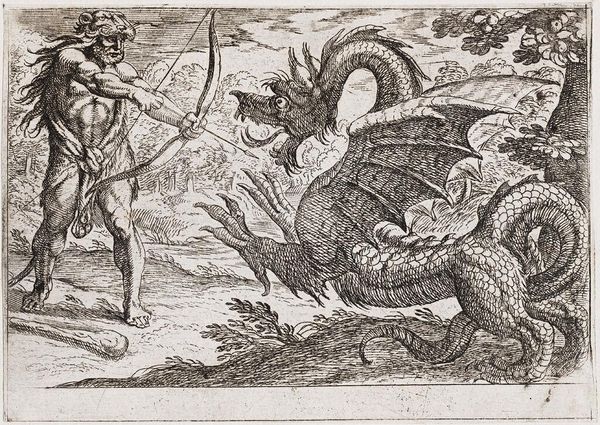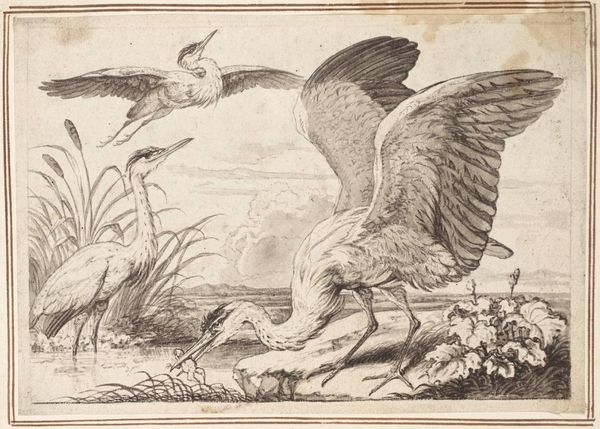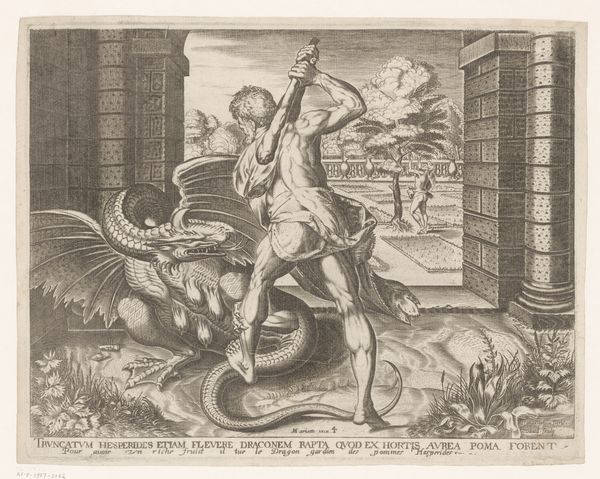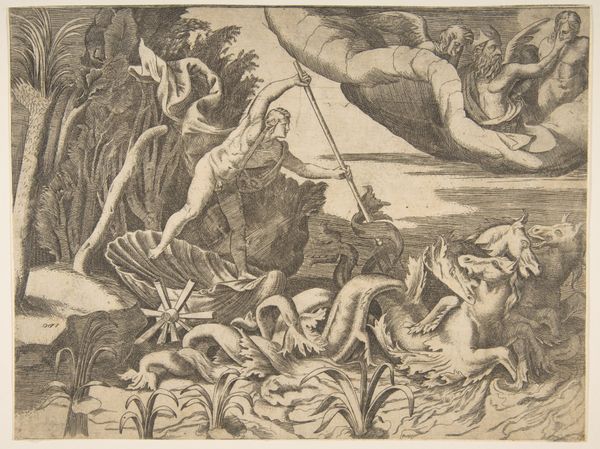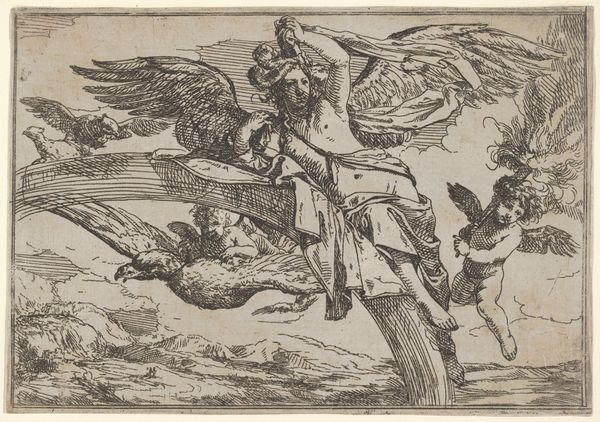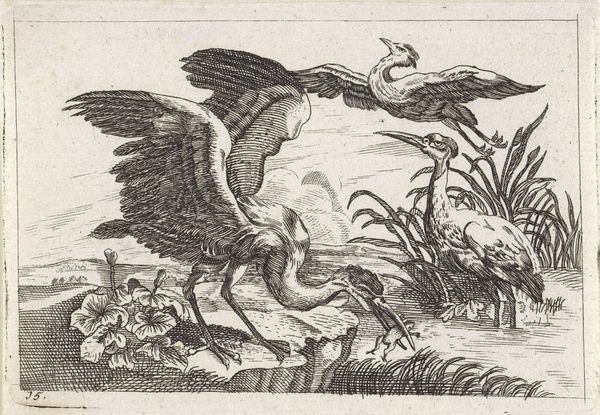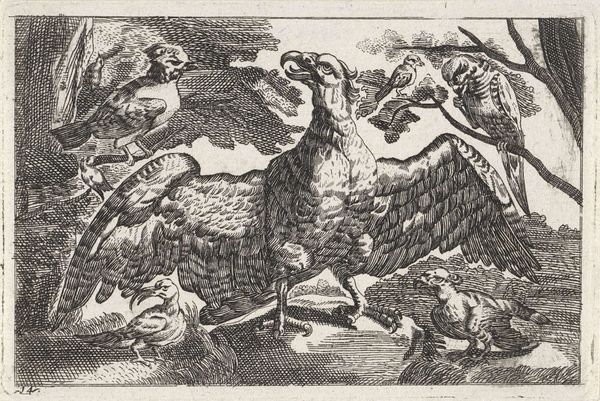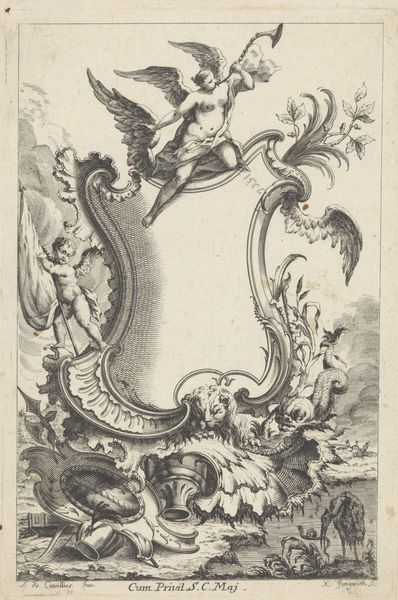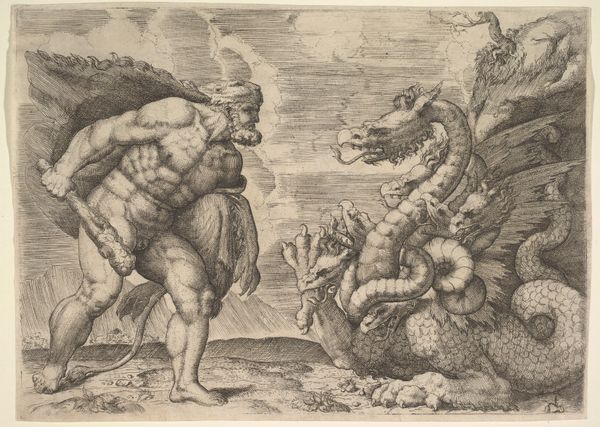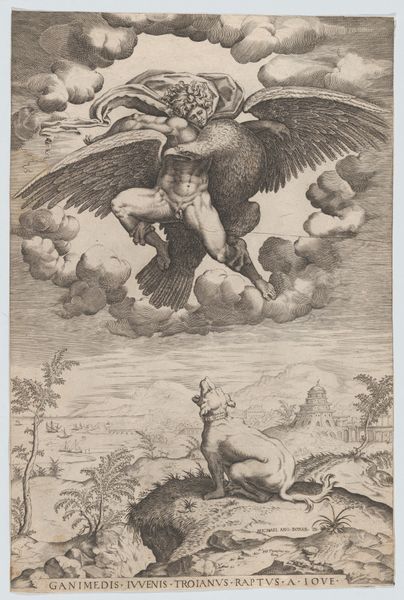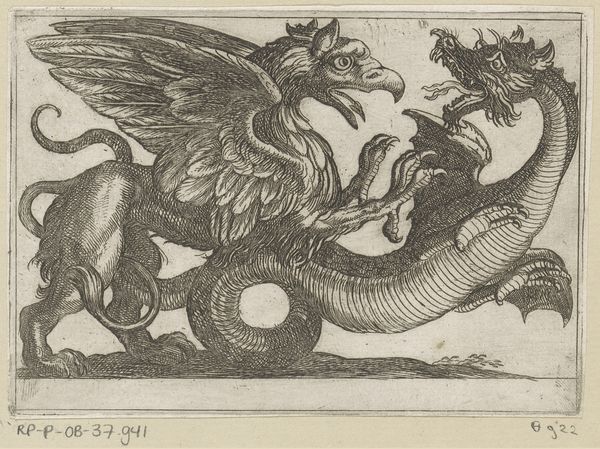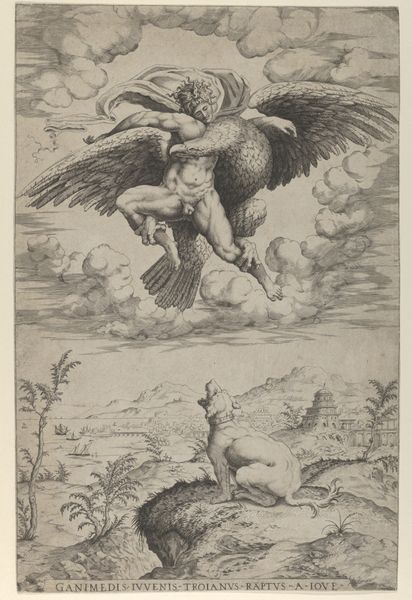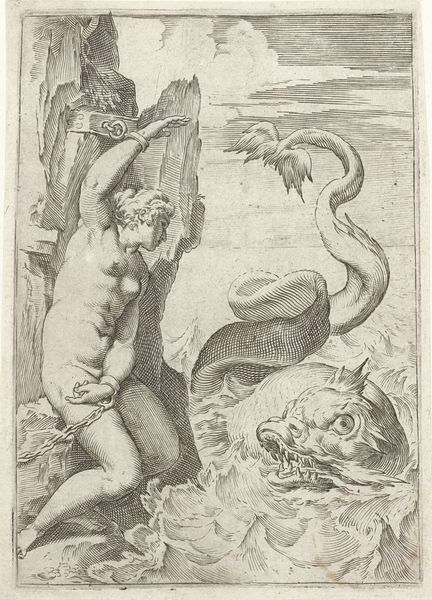
Hercules and the Serpent Ladon: Hercules draws his bow, the rearing serpent appears in profile, from the series 'The Labors of Hercules' 1608
0:00
0:00
drawing, print, etching, engraving
#
drawing
#
baroque
#
pen drawing
# print
#
etching
#
figuration
#
history-painting
#
engraving
Dimensions: sheet: 5 1/2 x 6 7/8 in. (13.9 x 17.5 cm) plate: 3 15/16 x 5 9/16 in. (10 x 14.1 cm)
Copyright: Public Domain
Curator: Looking at this piece, I immediately feel a sense of dramatic tension, with a bold contrast between the hero and the beast. Editor: Indeed! This is Antonio Tempesta's "Hercules and the Serpent Ladon," created around 1608. It's an etching, part of a series depicting the Labors of Hercules, and it offers a fascinating look at the heroic ideal as it was understood in the Baroque period. Curator: The rearing serpent is quite the icon! I can’t help but consider the psychological weight that dragons and serpents carry. The scale-like armor, the talons, and the dragon head—a symbolic representation of chaos, something primal that Hercules, civilization personified, must conquer. Editor: Absolutely. And that reading fits neatly into the socio-political context. Images of Hercules gained considerable popularity during times of conflict and were readily co-opted. Tempesta, trained in Rome with ties to Antwerp, would be quite familiar with such heroic imagery meant to both entertain and encourage specific virtue. Note, however, that unlike his Florentine predecessors, Tempesta moves Hercules front and center. Curator: Yes, the lion-skin headdress is an ancient symbol appropriated by myriad conquering cultures, from Alexander to emperors of Rome. He's positioned as both predator and protector, a dual identity further enhanced by the bow readied for lethal purpose. It tells a visual story of conquest and subjugation. Editor: Also of public spectacle. This piece and others in the series were part of a larger printmaking industry. Hercules imagery enjoyed enduring appeal, partly because it celebrated not only physical strength, but cunning and virtue. Circulating images like these through printmaking was about the formation of taste and the demonstration of learned humanism—virtue made public. Curator: And that public appeal continues! Though our contexts may be different now, those universal archetypes—hero, monster—remain charged with psychological and cultural meaning. It's like glimpsing into a collective dream. Editor: Agreed. What endures here is this potent imagery which continues to inspire reinterpretation within the larger framework of heroic ideals in visual culture.
Comments
No comments
Be the first to comment and join the conversation on the ultimate creative platform.
